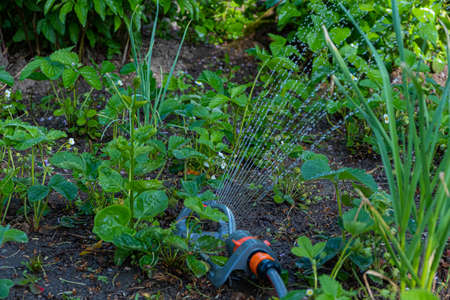Understanding Deer Behavior and Movement Patterns
Before building an effective deer fence, its important to understand how deer behave and what draws them into yards and gardens. Knowing their habits helps you design a fence that truly works.
How Deer Interact with Landscapes
Deer are creatures of habit. They follow the same trails daily, often passed down through generations. These paths typically lead from bedding areas (like wooded spaces) to feeding zones (such as open fields or gardens). Understanding the natural layout of your property can help you predict where deer are likely to enter.
Common Entry Points for Deer
| Landscape Feature | Why Deer Are Attracted |
|---|---|
| Wooded edges or forest lines | Shelter and cover; entry points to open areas |
| Open lawns or meadows | Easy access and visibility of food sources |
| Narrow gaps between structures or hedges | Natural funnels for movement; easy pathways |
What Attracts Deer to Your Yard or Garden?
Deer are primarily attracted by food. Gardens with vegetables, fruit trees, ornamental plants, and even certain types of mulch can be irresistible. They also seek water sources and may be drawn in by bird baths or ponds. Minimizing these attractants can reduce the chance of deer intrusion, but fencing is often necessary when deterrents aren’t enough.
Top Plants That Attract Deer
| Plant Type | Examples |
|---|---|
| Vegetables | Lettuce, beans, peas, sweet corn |
| Fruits | Apples, strawberries, blueberries |
| Ornamentals | Tulips, hostas, roses |
Deer Behavior That Impacts Fencing Design
Deer are excellent jumpers—they can leap over fences up to 8 feet high if motivated. Theyre also persistent and will test weak spots in fencing. During mating season (rut), bucks become more aggressive and may damage barriers. In winter, food scarcity pushes deer closer to homes as they search for anything edible.
Key Behavioral Traits to Consider:
- Jumping Ability: Requires fences at least 7-8 feet tall.
- Pushing/Bending Fences: Reinforce with strong materials like metal or heavy-duty plastic mesh.
- Tunneling Under: Secure bottom edge with ground stakes or bury part of the fence.
- Group Movement: Design gates and entrances to prevent multiple deer from slipping through when one opens an entry point.
By understanding how deer move through landscapes and what drives their behavior, youll be better equipped to create a fencing system that keeps them out effectively.
2. Fence Height, Placement, and Visibility: Key Design Considerations
When it comes to keeping deer out of your yard or garden, the way you design your fence is just as important as the materials you use. Deer are agile and curious animals that can jump high, squeeze through gaps, or find their way around poorly placed barriers. Let’s break down the key design factors to consider for building an effective deer fence.
Fence Height: How High Should It Be?
Deer can jump surprisingly high—up to 8 feet in some cases. To reliably keep them out, experts recommend a minimum fence height of 7.5 to 8 feet. Anything shorter may work temporarily, but it won’t be a long-term solution, especially if food is scarce and your garden looks tempting.
| Fence Height | Effectiveness | Recommended Use |
|---|---|---|
| 4-6 feet | Low | Not recommended for areas with heavy deer traffic |
| 6-7.5 feet | Moderate | May work in low-pressure zones or when combined with other deterrents |
| 7.5-8 feet+ | High | Best for consistent protection against deer |
Strategic Fence Placement
The placement of your deer fence can make a big difference in how well it works. Ideally, place fencing along your property lines to create a clear boundary between wild areas and cultivated spaces. If thats not possible, focus on enclosing specific zones like vegetable gardens or flower beds that are most at risk.
Tips for Effective Placement:
- Avoid leaving gaps where deer could slip through—especially near slopes or uneven terrain.
- If you’re using multiple fencing sections, overlap corners or secure them tightly to prevent weak spots.
- Create double-fencing zones (two fences spaced about 3–5 feet apart) in high-pressure areas; this confuses deer and makes them less likely to attempt a jump.
The Role of Visibility in Deer Deterrence
A common mistake people make is installing fencing that’s too hard for deer to see. Low-visibility fences, like thin wire or clear plastic mesh, may be physically effective but often get jumped over because deer don’t perceive them as barriers until it’s too late. To avoid this, choose materials or add features that improve visibility.
Ways to Improve Fence Visibility:
- Add flagging tape, ribbons, or reflective markers at eye level for deer (about 3–4 feet high).
- Use fencing with a visible mesh pattern or darker color that contrasts with the surroundings.
- Consider combining physical barriers with visual deterrents like motion-activated lights or scare devices.
By focusing on proper height, smart placement, and enhanced visibility, you’ll create a fence that not only keeps deer out but also blends well into your landscape while staying effective year-round.

3. Choosing the Right Fence Materials
When it comes to building a deer fence that actually works, choosing the right materials is just as important as the design and placement. In the U.S., there are several popular fencing options, each with its own set of pros and cons. Lets take a closer look at the most commonly used materials: metal mesh, polypropylene, and electric fencing.
Metal Mesh Fencing
Metal mesh fencing, often made from galvanized steel or welded wire, is one of the most durable options for keeping deer out.
Pros:
- Extremely strong and long-lasting
- Can handle impact from deer trying to push through
- Resistant to weather and chewing
Cons:
- More expensive upfront cost
- Heavier and harder to install without help
- May require professional installation for large areas
Polypropylene Fencing
This is a lightweight plastic mesh that’s easy to install and almost invisible from a distance, making it a popular choice for homeowners who want a less noticeable fence.
Pros:
- Affordable and widely available
- Easy DIY installation
- Blends in well with the landscape
Cons:
- Less durable than metal—can be torn or chewed by animals over time
- Not ideal for areas with heavy deer pressure
- May need replacement after several seasons
Electric Fencing
Electric fences use mild shocks to deter deer. They can be effective when installed properly but require ongoing maintenance.
Pros:
- Can be moved or adjusted easily
- Covers large areas at relatively low cost
- Effective psychological barrier for deer
Cons:
- Requires regular maintenance and power source
- Might not be safe around pets or children
- Less effective in high-pressure zones without proper baiting or training for deer
Comparison Table of Deer Fence Materials
| Material Type | Main Benefits | Main Drawbacks | Best For |
|---|---|---|---|
| Metal Mesh (Welded Wire) | Strong, long-lasting, weather-resistant | Heavy, costly, harder to install | Permanent installations in high-pressure areas |
| Polypropylene (Plastic Mesh) | Affordable, easy to install, blends into landscape | Tears easily, less durable over time | Lighter deer activity zones or temporary fencing needs |
| Electric Fencing | Covers large areas, adjustable, cost-effective over time | Needs power source, safety concerns, ongoing upkeep needed | Agricultural lands or rural properties with fewer visitors/pets |
Selecting the right fencing material depends on your specific property needs, budget, and how persistent the local deer population is. Understanding the strengths and weaknesses of each option can help you make an informed choice that protects your landscape effectively.
4. Installation Methods and Cost Considerations
Installing a deer fence can be a big project, especially if youre covering a large area or dealing with uneven terrain. Whether youre protecting a backyard garden in the suburbs or fencing off acres of rural property, choosing the right installation method is key to building an effective deer barrier. In this section, we’ll go over common installation practices for both residential and rural settings, compare DIY versus professional installation, and provide typical cost estimates to help you plan your project.
DIY vs. Professional Installation
One of the first decisions to make is whether to install the fence yourself or hire professionals. Both options have their pros and cons depending on your budget, available time, and experience with tools.
DIY Installation
If youre handy with tools and enjoy weekend projects, installing a deer fence yourself can save money. Many home improvement stores offer complete fence kits that include everything you need. This option works well for smaller properties or homeowners with some experience in outdoor construction.
Pros:
- Lower cost
- Control over materials and design choices
- Satisfaction of completing the project yourself
Cons:
- Time-consuming
- Physically demanding
- Mistakes can reduce fence effectiveness
Professional Installation
Hiring a contractor is more expensive but ensures proper installation, especially on challenging terrain or large properties. Professionals can also recommend the best materials and layout based on local deer behavior and property layout.
Pros:
- Quick and efficient installation
- Expert advice on design and placement
- Often includes warranties or service guarantees
Cons:
- Higher upfront cost
- Less control over the process unless closely supervised
Installation Methods by Property Type
| Property Type | Common Fence Type | Installation Method | Special Considerations |
|---|---|---|---|
| Residential Yards (Suburban) | Polypropylene mesh or metal wire fences (6–8 ft) | Posts set in concrete or driven into ground; hand tools often sufficient | Aesthetics may be important; HOA rules may apply |
| Large Rural Properties (Acreage) | High-tensile wire or woven wire fences (8 ft+) | T-posts or wooden posts installed with machinery; requires tensioning tools | Tough terrain may require grading; gates needed for vehicle access |
| Orchards & Farms | Metal fencing with electric top wires (for added deterrence) | Combination of manual labor and equipment; professional help recommended for wiring | Must meet agricultural safety standards; maintenance critical for long-term success |
Estimated Costs of Deer Fence Installation (Per Linear Foot)
| Fence Type | DIY Cost Range* | Professional Cost Range* |
|---|---|---|
| Polypropylene Mesh (7 ft) | $1.50 – $3.00 | $4.00 – $7.00+ |
| Metal Wire Fence (Welded/Woven) | $2.50 – $5.00 | $6.00 – $10.00+ |
| High-Tensile Wire (Rural Use) | $1.00 – $2.50 | $3.00 – $6.00+ |
| Add-on Electric Wire (Top only) | $0.50 – $1.00 extra per foot | $1.50 – $2.50 extra per foot |
*Note: Prices vary based on location, terrain difficulty, and material quality.
No matter which method you choose, planning ahead and understanding your propertys needs will go a long way toward building an effective deer fence that lasts for years.
5. Maintenance Tips and Long-Term Effectiveness
Once your deer fence is installed, keeping it in top shape year-round is key to ensuring it continues to protect your garden or property. Deer are smart and persistent, so staying one step ahead with regular maintenance and seasonal adjustments will help you avoid costly repairs or damage.
Routine Inspection Checklist
Plan to inspect your fence at least once a month, and after any major weather events like storms or heavy snowfall. Here’s a simple checklist to follow:
| What to Check | Why It Matters | How Often |
|---|---|---|
| Fence posts | Ensure they’re upright and secure in the ground | Monthly |
| Mesh or wire tension | Loose fencing can allow deer to push through or jump over | Monthly |
| Tears or holes in material | Even small gaps can invite deer in | Monthly and after storms |
| Gate latches and hinges | Secure gates prevent accidental openings | Bi-weekly |
| Vegetation near fence line | Overgrown plants can weaken fences or act as ramps for deer | Seasonally (spring/summer) |
Adapting to Seasonal Changes
Your deer fence may face different challenges depending on the season. In winter, snow buildup can reduce the effective height of your fence, making it easier for deer to jump over. Use snow fencing or clear snow drifts away from the base of your fence when needed. In spring and summer, fast-growing vegetation may put pressure on the fence or create new access points for deer.
Tips by Season:
- Spring: Check for post movement from thawing ground; trim new growth near fence line.
- Summer: Monitor for plant overgrowth and fix any sagging areas due to heat expansion.
- Fall: Reinforce weak spots before rutting season when bucks are more aggressive.
- Winter: Clear snow away from the base; check for ice damage or fallen branches.
Responding to Deer Behavior Changes
If you notice signs that deer are testing your fence—like hoof prints along the perimeter, bent mesh, or droppings nearby—it might be time to reinforce certain sections. You can install visual deterrents like hanging ribbons or aluminum pie pans temporarily to scare them off. For high-traffic areas, consider adding an electric wire about 18 inches off the ground as a secondary deterrent.
Behavioral Clues That Indicate Fence Pressure:
- Bent posts or leaning panels: Deer attempting to push through.
- Dirt paths worn near the fence: Frequent visits from a herd.
- Bark scraping or rubbing: Bucks marking territory during mating season.
A well-maintained deer fence is one of the most effective long-term solutions for keeping your landscape safe. With regular checks and a few seasonal adjustments, your fence can stay strong—and keep the deer at bay—for years to come.


